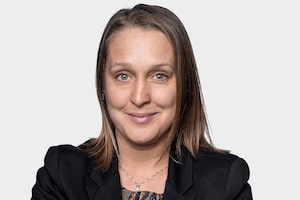If you want to make Gail Vaz-Oxlade's blood boil, just mention debt.
"People have no idea how much money they are earning or how much money they are spending. They are clueless. I am stunned at their willingness to just fall into a debt hole," the brash and blunt Canadian personal-finance maven said in an interview.
The host of the financial makeover television show Til Debt Do Us Part and author of the Canadian bestseller Debt-Free Forever believes easy access to cheap credit, along with a reluctance to take control of their financial situations, are most people's downfall in the IOU department.
"Whenever I tell people to add up their debt, they practically faint in front of me. People do not know how deep their shit is and if it scares you to death, you need to start paying attention to it."
With interest rates likely to rise in the coming months and credit set to get more expensive, things will only get tougher for debt-laden Canadians, Ms. Vaz-Oxlade said. "All those people who got into homes and are barely making ends meet with a mortgage rate that is a gift will be severely squeezed when they need to renew their mortgages."
Rates on lines of credit will also jump, she said, forcing people to make tough choices such as cutting out the expensive weekly restaurant meals in favour of eating at home. Those who are willing to change their behaviour, however, can get out of debt by following these steps:
1 Take stock of your debt situation. Make a list of all the places to which you owe money, except for your mortgage, unless you've consolidated consumer debt in your mortgage. If so, add the amount you consolidated to your list.
2 Prioritize your debt. List what you owe by interest rate, with the most expensive (the highest rate) at the top. This is the order in which you'll pay off the debt.
3 Calculate the minimum payment on each debt. That's what you have to pay to keep current and not hurt your credit history. Write the minimum payment beside each debt and add them up. That's the least you can put toward your debt every month.
4 Figure out how much to repay to get out of the hole. If you owe $2,500 on your credit card at 18 per cent, it's going to cost you $37.50 a month in interest. But if you want to get that credit card paid off in six months, you're going to have to slap about $417 a month against the principal to make it go away. That's a total of $454.50 a month. Once you've paid off the credit card, you can use that $454.50 for your next most expensive debt. That's called snowballing.
5 Decide where you're going to get the money. If you want to be debt free, you have to find the money to pay off the debt. It may mean going over your budget with a paring knife. It may mean finding a way to make more money. Do whatever it takes.
6 Make your debt repayments automatic. Set up an automatic payment for each debt, taking the guess work out of it, and making a firm commitment to the process. On your most expensive debt, auto pay the amount you came up with to have the debt gone by your Debt Freedom Day.
7 Chart your progress. Create a chart that shows how much you owe. Each time your auto pay goes through, colour in one of your boxes, or move your marker up the thermometer so you can see the progress you're making.
Gail Vaz-Oxlade also blogs daily at gailvazoxlade.com/blog
|
 Roma Luciw
Roma Luciw